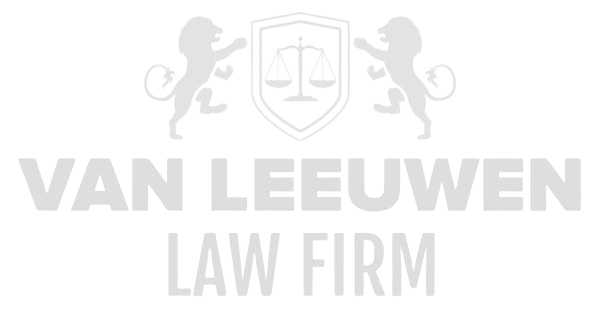The closure of a residence under Article 174a of the Municipalities Act, commonly known as the Victoria Act, represents one of the most drastic measures a mayor can impose within the domain of public order and safety. This legislation extends beyond traditional enforcement tools, enabling local authorities to address an immediate and acute threat to the living environment by temporarily closing a residence. The significance of such authority cannot be overstated, as it directly impacts fundamental rights of residents, including the inviolability of the home and the right to privacy, as enshrined in the Constitution and the European Convention on Human Rights. At the same time, the law acknowledges that serious nuisance, organized crime, or structural disruption of the living environment cannot be ignored, and that conventional investigative or criminal justice instruments may sometimes prove insufficient.
The Victoria Act essentially balances on the edge between legal protection and enforcement, placing the government in a dilemma: preserving public order while safeguarding individual freedom and the integrity of the home. In cases where residences serve as hubs for criminal activity, such as drug production, fencing of stolen goods, or illegal prostitution, the residence itself can constitute a threat to the immediate surroundings. Closing a residence is therefore not a punitive measure but a preventive tool aimed at disrupting the continuity of nuisance and restoring the residential and living environment. Moreover, this measure sends a strong message to the community: serious breaches of public order will not be tolerated, and authorities are prepared to take decisive action when other interventions prove inadequate.
Legal Basis
The authority to close a residence is exclusively granted to the mayor under Article 174a of the Municipalities Act, forming part of the Victoria Act. This legal foundation not only defines the scope of the instrument but also establishes the conditions under which a residence may be closed. It primarily concerns private residences and non-publicly accessible premises, ensuring that the measure targets the core of residents’ private lives. The law stipulates that closure may only occur in cases of serious disturbance of public order or a well-founded fear thereof, with activities within the residence being equally relevant. This combination of criteria necessitates a careful and thorough assessment, requiring the mayor to demonstrate that the situation exceeds normal enforcement measures and poses an immediate threat to the local environment.
Furthermore, the law allows for closure in anticipation of repeated nuisance. This provision recognizes that structural problems often extend beyond a single incident and that preventive action is necessary to avoid further escalation. The authority is supplemented by provisions of the Housing Act, such as Article 17, which enables the municipal executive to close a residence when the livability of the area is threatened, and Article 13b, which obliges the property owner to repurpose the property. In extreme cases, expropriation under Article 77 of the Expropriation Act may be pursued, providing a cascading framework of interventions ranging from administrative closure to the ultimate measure of property expropriation.
The legal basis of the Victoria Act is thus explicitly designed to address severe situations where the residence functions as a center of criminal or disruptive activity. The authority is exclusive, meaning that only the mayor can decide to close a property, while other forms of intervention, such as police action or criminal prosecution, may only be applied in parallel or as complementary measures. This exclusivity underscores the importance of careful justification and documentation of each decision, as the consequences for affected residents are significant, and judicial oversight is stringent.
Purpose and Scope
The primary purpose of the Victoria Act is the protection of public order and safety within residential areas. The law provides a mechanism to address serious and structural nuisance that surpasses the capacity of other enforcement tools. Its focus lies on restoring a safe and livable environment for neighbors and mitigating risks to the health and safety of residents. Importantly, the measure is not primarily of a criminal nature; it serves a preventive and corrective function under administrative law, independent of prosecution by the Public Prosecution Service. Thus, the closure instrument operates tactically to stabilize the living environment without replacing the formal criminal responsibility of the nuisance perpetrators.
The scope of the law extends to various forms of serious nuisance, including drug-related activities, fencing of stolen goods, prostitution, and other criminal conduct. Intervention can be applied not only in cases of actual nuisance but also when there is a serious fear of recurrence by notorious offenders. Consequently, the measure is both reactive and preventive in nature. The law also specifies that closures are temporary, ensuring that the instrument is never employed as a permanent measure, but must be tailored to the duration and intensity of the nuisance. The temporary nature allows authorities to monitor the situation and assess the impact on the residential environment before considering further action.
Moreover, the Victoria Act functions as a signaling mechanism, demonstrating that authorities are prepared to take decisive action in the face of structural public order violations. This has a preventive effect on potential offenders and supports broader strategies for neighborhood management and undermining criminal networks. Therefore, the measure is not only aimed at the immediate problem property but contributes to a wider approach to safety and livability in residential areas.
Role of the Mayor
The mayor is the exclusive authority for decisions under Article 174a of the Municipalities Act. This exclusivity implies a high level of responsibility and a requirement for thorough care in decision-making. Each closure decision must be meticulously justified, with the mayor demonstrating that serious nuisance or a serious risk of recurrence exists. The decision is formalized as an administrative act under the General Administrative Law Act (Awb), allowing residents to lodge objections and appeals. These legal frameworks ensure that enforcement of public order is balanced against fundamental rights, providing residents with a remedy against unlawful intervention.
The mayor is required to consider less intrusive measures before proceeding with a closure. This principle of subsidiarity demands an assessment of alternative actions, such as warnings, supervision, or mediation, prior to employing the most severe instrument. In urgent situations, immediate closure may be applied, balancing the urgency of the threat against the rights of residents. Special care must be taken for innocent occupants, such as children or partners, who cannot be left without shelter.
The mayor also ensures enforcement of the decision through administrative coercion or by imposing fines. Implementing a closure often requires close collaboration with the police and other enforcement agencies, with physical closure supported by seals and barricades. At the same time, the mayor has a responsibility to communicate with the surrounding community and the municipal council, ensuring transparency and enabling evaluation of the measure’s impact on the living environment. In this role, the mayor acts as a link between legal, social, and safety interests, balancing the severity of the nuisance with the protection of fundamental rights.
Procedure and Justification
The process for deciding to close a residence is meticulous and strictly regulated. It begins with an inventory of facts and circumstances, emphasizing concrete, objective, and verifiable evidence. Police reports, complaints from neighbors, and direct observations by municipal officials form the basis for decision-making. The nuisance must be structural and prolonged; isolated noise disturbances or a single conflict do not justify closure.
A critical component of the procedure is warning the resident prior to issuing the decision. In urgent cases, this step may be shortened, but typically, the resident is given the opportunity to resolve the nuisance independently. The closure decision is documented in writing, including detailed justification and the duration of closure. Publication follows the requirements of the Awb, ensuring that legal protection is maintained.
Moreover, the assessment of proportionality and subsidiarity is a mandatory part of the decision-making process. The mayor must demonstrate that the measure is necessary, that less intrusive methods have proven insufficient, and that the impact of the closure is proportionate to the severity of the nuisance. Post-closure evaluation allows authorities to assess whether the objective was achieved and whether further measures are needed, integrating the instrument into a broader policy for maintaining public order and safety in residential areas.
Fundamental Rights and Legal Framework
The closure of a residence engages the most fundamental rights of citizens, directly testing the limits of the rule of law. Article 10 of the Constitution guarantees the right to privacy, while Article 12 protects the inviolability of the home; in addition, Article 8 of the European Convention on Human Rights (ECHR) explicitly ensures the right to respect for one’s home. Closing a residence under the Victoria Act therefore represents a significant infringement on these fundamental rights. This measure can only be justified in cases of acute necessity to maintain public order or the safety of the living environment, and never as an instrument of arbitrariness or preventive repression without concrete facts. The rigorous legal scrutiny that follows emphasizes proportionality, necessity, and subsidiarity, ensuring that authorities may only exercise this power in the most extreme circumstances.
The instrument aligns with administrative law, meaning that the measure is not criminal and the closure does not constitute a punishment. The distinction between administrative enforcement and criminal prosecution is essential, as the Victoria Act is primarily preventive and corrective in nature. Closure of a residence can never be applied to minor disturbances, such as occasional neighborhood noise or a single isolated incident. Legal frameworks require that each decision be thoroughly substantiated so that the administrative court can later assess whether the measure was lawful, proportionate, and necessary. Judicial review serves as a crucial safeguard against arbitrariness and excessive government intervention.
Moreover, the legal framework is intertwined with practical requirements for implementation and enforcement. Each decision must adhere to principles of diligence and transparency, and the mayor must demonstrate that all other, lighter interventions have been considered and applied where possible. The law requires a strict balancing of interests: the protection of the living environment and public order is weighed against the resident’s fundamental right to undisturbed habitation. This tension between public order and individual rights lies at the heart of the Victoria Act and illustrates the profound impact such a measure has within the legal and social landscape of crime disruption and nuisance control.
Criteria for Disturbance
The Victoria Act is explicitly aimed at serious forms of disturbance that are structural and harmful to the living environment. Drug trafficking constitutes a classical ground for closure, with residences functioning as hubs for production, storage, and distribution. Such situations create risks not only for the immediate surroundings but often trigger a chain reaction of criminal activity, including visits from addicts, violent incidents, and other forms of organized crime. The instrument is intended to break this vicious cycle of disturbance and undermining, enabling a preventive reset of the living environment.
Additionally, fencing and storage of stolen goods fall within the criteria, as does prostitution conducted from private residences. These activities cause direct disruption of the neighborhood and can escalate to threats or intimidation of nearby residents. Both the actual conduct and the severity, as well as the fear of recurrence, serve as criteria for intervention. Article 174a, paragraph 2, explicitly recognizes that a serious fear of recurrence is sufficient to justify closure, allowing preventive protection of the living environment before disturbances escalate into full-blown problems.
The structural nature of the disturbance is a central condition. Incidental noise or short-term conflicts do not qualify; the law targets patterns that demonstrably threaten the safety and stability of the neighborhood. This approach aligns with broader strategies for combating organized crime and undermining, aiming to manage the risk of escalation and prolonged disruption of public order effectively. It concerns situations in which not only direct residents but the entire living environment is at risk, necessitating administrative intervention to prevent further harm.
Enforcement and Implementation
In practice, closing a residence is carried out through administrative enforcement, as described in Article 125 of the Municipal Law. This entails physically restricting access to the residence through seals, barricades, or other closure methods so that residents and third parties cannot enter. The duration of a closure varies, but in practice often spans several months, depending on the nature of the disturbance and the impact on the living environment. Police and municipal enforcement officers collaborate closely to ensure the measure functions effectively and maintains public order.
Violation of a closure order constitutes a criminal offense under Article 184 of the Penal Code. This reinforces the enforceability of the decision and underscores the seriousness of the measure. The municipal executive can also apply Victoria Act instruments, such as managing the property or appointing a new user. In extreme cases, expropriation may follow, establishing a graduated system of measures ranging from temporary closure to definitive intervention.
The effectiveness of enforcement heavily depends on careful implementation and oversight. The mayor must monitor the impact on the living environment and report to the municipal council, allowing for evaluation and adjustment. The application of the Victoria Act is intensive and legally risky, with every step required to meet standards of proportionality, subsidiarity, and careful justification. This makes the measure both powerful and complex: it can resolve an acute problem but simultaneously presents legal, social, and operational challenges.
Duty of Care and Social Aspects
One of the most challenging aspects of applying the Victoria Act is the duty of care toward innocent residents. Children, partners, or other cohabitants must not be left without shelter, which often requires municipalities to arrange temporary housing and support services. The measure must be executed in a way that respects human dignity and prevents new problems, such as homelessness or social disruption. This duty of care necessitates close cooperation with social organizations, shelters, and neighborhood mediation programs.
The tension between penalizing the disturbance-causing resident and protecting the family or other residents is evident. The law clarifies that the measure is administrative rather than criminal, focusing on restoring the living environment rather than personal retribution. At the same time, it is essential for the mayor to ensure proportionality: the responsible party may face intervention, but the consequences must not unduly affect innocent parties. This requires careful assessment and a practical approach that ensures both safety and humanity.
The social dimension of the Victoria Act highlights that the instrument is more than a legal measure. It aligns with broader strategies for neighborhood management, crime disruption, and social stability, prioritizing the preservation of livability. The effectiveness of the measure depends not only on its legal foundation but also on the municipality’s ability to mitigate social consequences and restore a safe living environment without unnecessary harm to residents.
Legal Protection
The closure order falls under the General Administrative Law (Awb) and provides residents with a clear route for objection and appeal. Article 7:1 Awb regulates the right to lodge objections, while Article 8:1 Awb provides the right to appeal to the administrative court. In urgent cases, a provisional measure is also possible under Article 8:81 Awb, allowing residents to request temporary suspension of the order. The court reviews the measure for proportionality, subsidiarity, and the thoroughness of justification, serving as a crucial safeguard against unlawful governmental action.
Not only direct residents but also neighbors may, in some cases, qualify as interested parties for legal protection. This aligns with the broader objective of the Victoria Act: restoring a safe and livable living environment. Additionally, the administrative court can award damages if a closure is unlawfully executed, emphasizing the seriousness of the infringement and compelling authorities to act with care. Complaints may also be investigated by the ombudsman, strengthening oversight of procedural compliance and legal protection.
Legal protection is thus an integral part of the instrument, emphasizing the balance the law seeks to create between government authority and individual rights. The ability to object and appeal, combined with provisional measures and compensation claims, ensures that residents are not powerless in the face of a drastic measure and that the application of the Victoria Act remains subject to strict legal scrutiny.
Practical Application and Effectiveness
In practice, the Victoria Act is applied relatively sparingly, primarily due to the stringent conditions attached to the closure of a property. The measure is mainly deployed in cases involving properties that generate severe and structural disturbances, surpassing the reach of other interventions. Properties that serve as hubs for drug trafficking, fencing, or illegal prostitution are particularly likely candidates for this measure. This selectivity ensures that the instrument’s effectiveness is concentrated on the most urgent cases, where immediate intervention is necessary to stabilize the living environment and prevent further escalation of criminal activities.
The preventive nature of the measure highlights a significant strategic function: a temporary closure not only directly impacts the property but also serves as a signal to the community and potential offenders. It demonstrates that the authorities are prepared to take decisive action, creating a deterrent effect and reducing the likelihood of recurrence of serious disturbances. At the same time, practical implementation is complex, as it requires careful attention to the welfare of innocent residents, rigorous justification of the closure, and intensive coordination between the police and municipal authorities. Consequently, the success of the instrument heavily depends on the level of preparation and cooperation among the various actors involved.
Legally, the instrument remains risky: administrative courts rigorously assess proportionality and subsidiarity. A closure that is insufficiently justified or disproportionate to the severity of the disturbance can be overturned by a judge. Therefore, the practical application of the Victoria Act represents a careful balance between enforceability, legal robustness, and the direct effect on the living environment. The instrument is effective when it serves as a temporary reset for a problematic property, protecting the surrounding area, while requiring constant monitoring and evaluation to ensure the desired long-term impact.
Application in Combating Undermining
The Victoria Act aligns with broader strategies for combating undermining, targeting criminal networks and organized disturbances. Closing a property dismantles key nodes of criminal activity, thereby achieving immediate disruption of public order. Many of these properties are located in vulnerable neighborhoods where the impact of crime is substantial and where conventional enforcement measures prove insufficient. Temporarily taking the property out of use not only limits direct disturbances but also sends a clear message to network partners and other potential offenders that the authorities possess both the capacity and willingness to intervene.
The instrument is most effective in situations where multiple forms of undermining activities converge, such as drug trafficking combined with fencing, prostitution, or intimidation. Closing the property interrupts the criminal chain, prevents further escalation, and simultaneously provides an opportunity to protect residents and the neighborhood from secondary harm. Strategic use of the Victoria Act within a broader safety and enforcement policy enhances the resilience of the living environment against criminal influence and contributes to a robust approach to combating undermining.
Application in undermining also requires an integrated approach, involving collaboration among police, municipal authorities, the judiciary, and social partners. Only through such cooperation can the measure be implemented effectively and remain legally defensible. Continuous monitoring and evaluation of outcomes are crucial to ensure that the intervention not only temporarily halts disturbances but also contributes to structural improvements in neighborhood safety and livability.
Signaling Function
Beyond its direct impact on the property, the Victoria Act serves a powerful signaling function. By deploying such a significant measure as a closure, it becomes evident that serious disturbances and criminal activities will not be tolerated. This signal is of critical importance for both the residents involved and the broader community, as it demonstrates the enforcement capacity and authority of local government. The message is clear: the authorities are willing to temporarily limit fundamental rights when public order and safety are seriously threatened.
The signal also extends to potential offenders in the surrounding area. The threat of closure, combined with its actual execution, creates a deterrent effect and can prevent the recurrence of criminal activity. This strengthens the preventive impact of the instrument and supports other enforcement strategies, such as surveillance, neighborhood mediation, and administrative interventions. At the same time, the signaling function must be applied carefully, ensuring that proportionality and protection for innocent residents are not compromised.
A strong signaling function contributes to the broader objectives of the Victoria Act: restoring livability and enhancing safety in neighborhoods vulnerable to undermining activities. By communicating enforcement capacity and demonstrating direct intervention in cases of serious disturbance, both residents and criminal network participants gain a clear understanding of the limits of tolerated behavior within the living environment.
Strategic Deployment
Strategic deployment of the Victoria Act requires careful integration within the municipality’s broader enforcement policy. The instrument cannot be considered in isolation from other measures, such as neighborhood management, surveillance, criminal prosecution, or social interventions. In practice, property closures are often applied as part of a broader approach, targeting locations that structurally undermine public order. Strategic deployment requires a detailed analysis of risks, disturbance patterns, and potential impact on the neighborhood, ensuring that the measure is maximally effective and legally defensible.
A critical aspect of the strategy is the linkage of prevention and enforcement. Closure allows immediate intervention in cases of acute threat, while parallel interventions, such as social support, care programs, and monitoring, ensure that disturbances are mitigated in the longer term. Through this integrated approach, the Victoria Act can function as an effective tool in undermining policy, addressing structural disturbances, and restoring neighborhood livability.
Finally, strategic deployment emphasizes that the instrument is not an isolated objective but part of a layered approach to public order and safety. Its effectiveness depends on careful preparation, intensive collaboration among police, municipal authorities, and social partners, and ongoing evaluation. When these conditions are met, the Victoria Act can serve as a powerful, preventive, and corrective tool that contributes both directly and structurally to safety, livability, and the fight against undermining.









